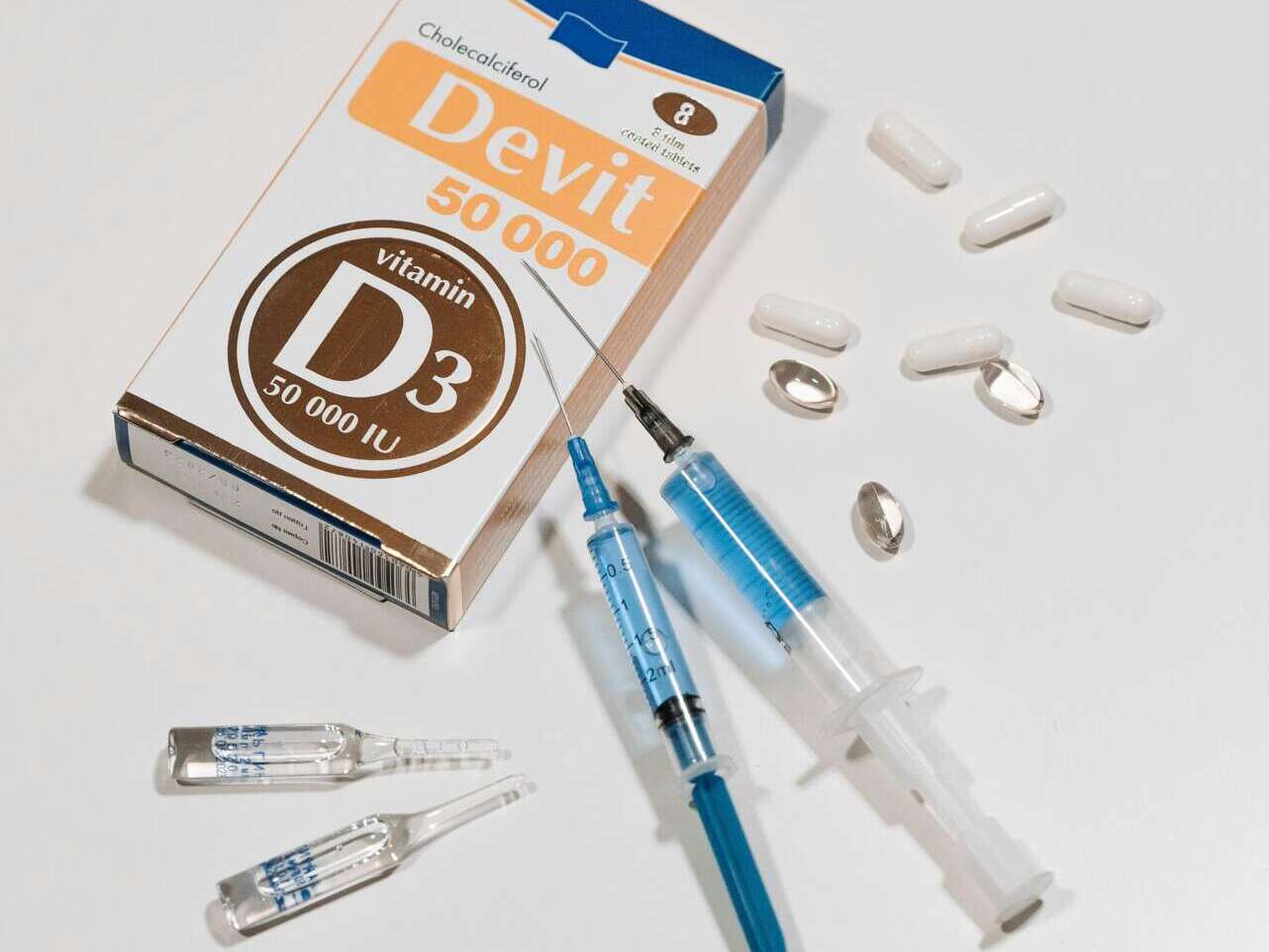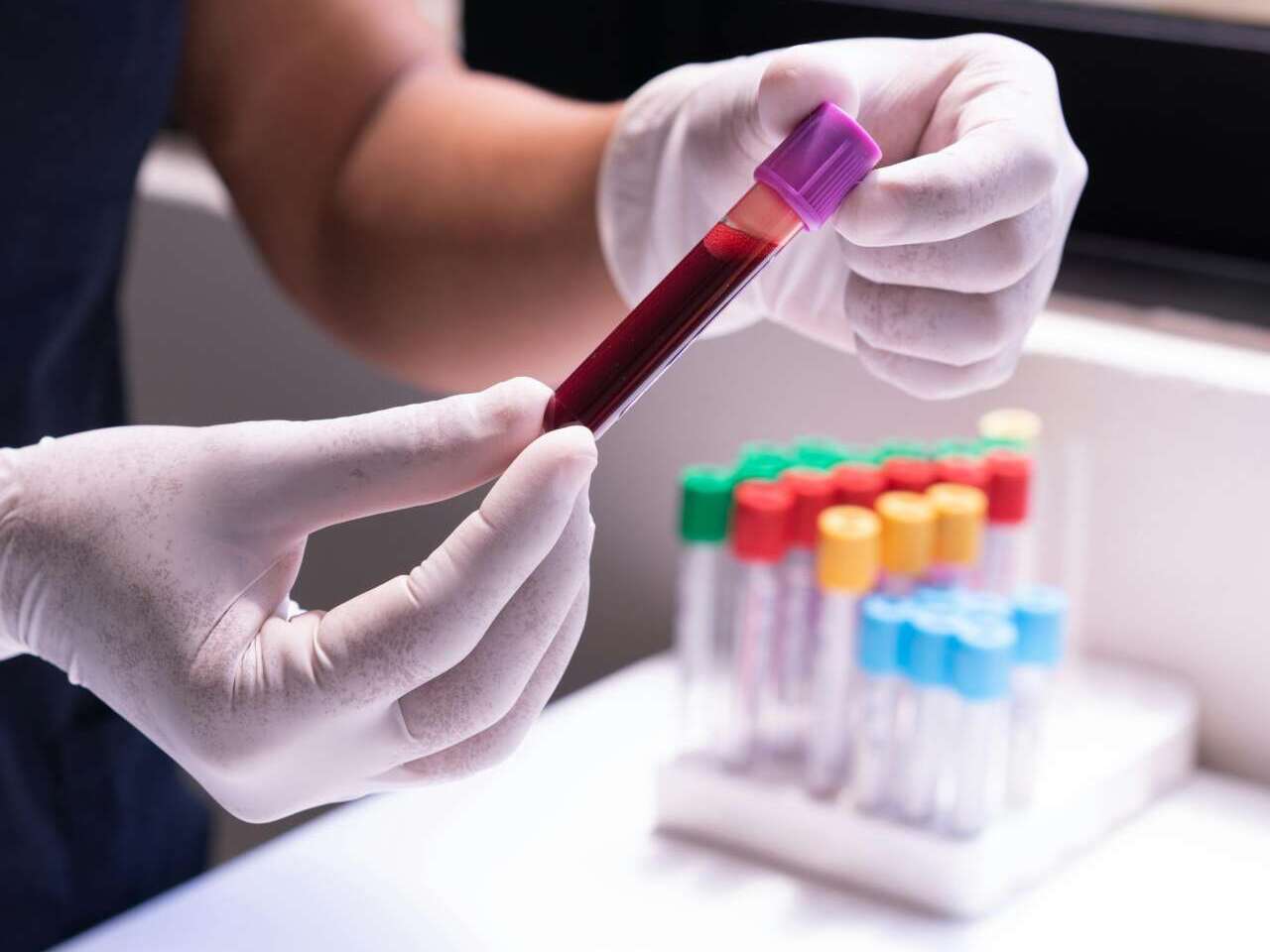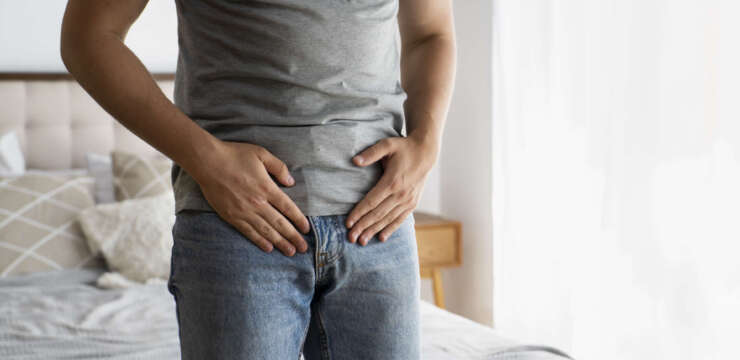Imagine this: summer, fun, and sunshine. If you’re in the northern hemisphere, you don’t have to think about it too hard – because summer is here! That sunshine is excellent for having fun, but did you know it’s also good for our bodies? The sun helps our bodies make vitamin D. That’s why it’s called the sunshine vitamin.
In this post, we examine why vitamin D is so important, how to get enough of it, and what happens if you don’t.
What is Vitamin D?
The type of vitamin that helps our bodies develop healthy bones and teeth is vitamin D. It is a fat-soluble vitamin that’s also the immune system’s superhero, defending us against disease and keeping us well. There are several types of vitamin D, but the two main types are vitamin D2 and vitamin D3:
D2
Another name for vitamin D2 is ergocalciferol. The type of vitamin helps with bone health and boosts your immune system. It does this by supporting your body’s calcium and phosphorus absorption, essential for strong bones and teeth. Fortified foods and plants, such as mushrooms, are the primary sources of vitamin D2. These foods naturally make an excellent option for those who follow a vegetarian or vegan diet.

D3
Another name for vitamin D3 is cholecalciferol. It’s the type of vitamin for immune system function and aiding bone health. It’s found mostly in animal-derived foods such as fish and eggs (especially egg yolks). However, sunlight also produces vitamin D3 in your skin. To have and maintain healthy bones and teeth, your body needs calcium and phosphorus, which vitamin D3 helps absorb. Vitamin D levels in our blood can be raised and maintained better with this type of vitamin D. Getting enough vitamin D3 protects adults from osteoporosis and rickets in children. It also reduces inflammation and helps the immune system fight off infections.
The Science Behind The Sunshine Vitamin
Vitamin D is fat-soluble, which means the body can store it in the liver and adipose tissue. It is produced in the skin when it’s exposed to sunlight, specifically ultraviolet B (UVB) rays. UVB rays convert a cholesterol derivative in the skin into vitamin D3. That’s how it starts.
After that, the body converts vitamin D twice more to make it active:
- Liver: The liver converts vitamin D3 into calcidiol, also known as 25-hydroxyvitamin D (25 OH).
- Kidneys: The kidneys convert calcidiol into calcitriol, the active form of vitamin D.
So calcitriol helps control calcium and phosphorus levels in the blood for healthy bone development.
Why Do We Need Vitamin D?
Vitamin D does many cool things for our bodies:

It boosts your mood
Vitamin D can help improve your mood and reduce depression and anxiety. Research shows that vitamin D is involved in mood regulation because supplements help people with depressive symptoms feel better. It’s even been shown that low vitamin D levels are linked to sadness and anxiety.
It helps you lose weight.
Research shows that those with higher vitamin D levels have more effortless weight loss. Vitamin D levels are lower in those with higher body weight. Some studies show that obese people who took vitamin D supplements lost more weight than those who didn’t. Combined with calcium, vitamin D can even reduce hunger and aid in weight loss.
It makes your bones stronger.
Good bone health and healthy teeth depend on calcium, which is better absorbed by our body when we have vitamin D. Bones without enough vitamin D may become brittle, thin, or deformed. This is most important for kids, teenagers, and senior citizens who may develop osteoporosis.
It affects your blood pressure.
Vitamin D is linked to blood pressure and heart health. Research shows that having enough vitamin D helps to keep blood pressure in check by influencing the renin-angiotensin-aldosterone system, which controls blood volume and systemic vascular resistance.
Vitamin D’s anti-inflammatory and vasodilatory properties also help with blood vessel function. Low vitamin D levels have been linked to hypertension (high blood pressure). Get enough vitamin D through sun, diet, or supplements to keep your blood pressure optimal and heart healthy. It’s still debated, though, whether vitamin D is a risk factor for heart disease or an active contributor.
It boosts your immune response.
Vitamin D reduces the risk of infections and illnesses by supporting healthy immune system function. For example, several studies show it can shield against common infections like the flu and even COVID-19. In short, vitamin D is the immune system powerhouse.
Deficiency Symptoms

A lack of vitamin D can cause many health problems. Here are some to watch out for:
- Fatigue: Feeling tired all the time.
- Back and Bone Pain: Weak or aching bones, especially in the legs and lower back.
- Depression: Low vitamin D levels can be linked to low mood and depression.
- Prone to illness: Insufficient vitamin D intake may cause a weak immune system and recurring illnesses.
Who is at Risk?
A vitamin D deficiency is more common in:
- Those who are indoors most of the time: Your body doesn’t get enough sun exposure to produce vitamin D if you’re indoors most of the time.
- Those with darker skin: The skin’s ability to produce vitamin D from the sun is reduced in those with higher melanin levels. If you have darker skin, you have more protection from sunlight, so you need more sunlight to maintain optimum vitamin D levels.
- Older adults: The skin’s ability to produce vitamin D decreases as you get older.
- Those in northern latitudes: Those who live in areas with long winters and minimal sunlight are more prone to deficiency.
- Those with certain medical conditions: Conditions like celiac disease, cystic fibrosis, and Crohn’s disease can affect the intestine’s ability to absorb vitamin D from food.
Getting Enough Vitamin D
Doctor Ann’s Top Tips
Sunlight
The easiest way to get vitamin D is to go out in the sun. 15-30 minutes of sun exposure a few times a week can do wonders. Avoid excessive sun exposure and apply sunscreen to protect your skin from sunburn. Natural sunlight can support our vitamin D needs from early spring to mid-autumn.
You may prefer to wear a hat and expose your arms and legs to prevent signs of ageing! This is what I do. Remember, the amount of sunlight you need will depend on your skin colour; if you are darker, you may need more sun exposure to meet your body’s needs.
Food
Include vitamin D-rich foods in your diet. Here are some:
- Fish: Salmon, sardines, tuna, shrimp
- Dairy: Milk, cheese, some time of yoghurt
- Eggs: Especially the yolks
- Fortified Foods: Cereals, orange juice, plant-based milk with added vitamin D
- Mushrooms: Some types of mushrooms, especially those exposed to UV light, can be good sources of vitamin D
Supplements
Sometimes, especially during winter or with limited sun exposure, you might need an oral vitamin D supplement. Talk to your doctor to determine the right amount for you. In the UK, a daily supplement is recommended for the winter months. Here are some tips for choosing the right supplement:
The Different Forms: D3 is more effective than D2.
- Choose Your Preferred Form: Supplements include oral vitamin D tablets, liquid drops and gummies. Choose what works for you, but be cautious with gummies as they might contain added sugars.
- Check for Combinations: Some supplements combine vitamin D with other nutrients, such as calcium, magnesium, or vitamin K2, which can enhance its benefits.
Fish liver oils
Fish liver oils, such as cod liver oil, are rich sources of vitamin D, making them a good option for maintaining adequate levels of this essential nutrient. They also provide other beneficial nutrients like omega-3 fatty acids and vitamin A. These oils are particularly useful for individuals with limited sun exposure or dietary intake of vitamin D. You need to check if it is safe for you. Fish liver oils can help support your body’s needs, support a range of bodily functions, and contribute to overall health. It is usually best to avoid children, pregnancy, hypertension and diabetes.
Balancing Vitamin D Levels

Getting the right amount of vitamin D. Too little can cause health problems, but too much isn’t good either. It’s generally much more complicated to have too much. Your doctor can help you find the right balance.
How Much Vitamin D Do You Need?
The amount of vitamin D you need depends on your age, lifestyle and where you live. Here’s a general guide:
- Infants (0-12 months): 400-1,000 IU (International Units) per day
- Children (1-18 years): 600-1,000 IU per day
- Adults (19-70 years): 600-2,000 IU per day
- Adults (70+ years): 800-2,000 IU per day
- Pregnant and Breastfeeding Women: 600-2,000 IU per day
Deficiency Causes
Vitamin D deficiency is mainly caused by limited sunlight exposure, especially in areas with long winters or high pollution. Spending too much time indoors or using sunscreen (which blocks UVB rays needed for vitamin D synthesis) can also cause deficiency.
Some conditions and factors can affect how well your body absorbs vitamin D:
Age-Related
- Age: Our skin’s ability to produce vitamin D decreases as we age.
- Kidney or Liver Conditions: As we age, the kidneys are less able to convert vitamin D into its active form, which can cause deficiency.
Diet-Related
- Obesity: Fat cells extract Vitamin D from the blood, which can decrease its release into circulation in obese individuals.
- Exclusive Breastfeeding: Infants who are exclusively breastfed and not receiving vitamin D supplements can be at risk, especially if they have dark skin or minimal sun exposure.
- Dietary Restrictions: A diet that lacks fish, fortified dairy products or egg yolks can cause deficiency, especially in strict vegetarians and vegans.
Other Causes
- Skin Pigmentation: Darker skin has more melanin, which reduces the skin’s ability to produce vitamin D from sunlight.
- Malabsorption or Gut Surgery: Conditions like Crohn’s disease, cystic fibrosis and celiac disease can affect the intestine’s ability to absorb vitamin D from food.
Vitamin D Status Testing – The 25 OH Test
Health professionals test for vitamin D by measuring the level of 25-hydroxyvitamin D (25 OH) in the blood, which is usually one of the best indicators of an individual’s vitamin D status. This involves taking a blood sample, usually from a vein in the arm, which is then sent to a lab. The 25 OH blood test can measure D2 and D3, giving you a total vitamin D picture.
By checking these levels, health professionals can determine if you have enough, not enough or deficient vitamin D and then advise on dietary changes, supplements or lifestyle modifications to improve your overall health and prevent conditions like osteoporosis and rickets.
Case Study: Emma’s Vitamin D Deficiency

I recently had a patient called Emma, 42, who has been feeling tired and weak and getting cold. Despite getting enough sleep and eating well, her symptoms persist. She was baffled by her fatigue and weakened immune system and decided to see me.
First Consultation
Emma goes to see me, her GP, and explains her symptoms. I listen, ask questions, and do a physical examination to rule out other causes. Given Emma’s symptoms and her lack of sun exposure due to her indoor job, I suspect a vitamin D deficiency and order a blood test to check her vitamin D levels. I also check for other conditions like thyroid and anaemia, which could explain the tiredness.
Diagnosis
The test results show that Emma has very low vitamin D. I explain vitamin D is essential for bone health, immune function and overall well-being. A deficiency can cause fatigue, muscle weakness and an increased risk of infections.
Treatment Plan
I put together a plan to help Emma increase her vitamin D levels:
- Dietary Changes: give Emma a list of vitamin D rich foods to add to her diet. These for Emma are:
- Fatty fish (salmon, mackerel, tuna)
- Egg yolks
- Fortified foods (milk, orange juice, cereals)
- Cheese
- Supplements: prescribes a vitamin D supplement and recommends a daily dose based on Emma’s deficiency level. I explained that I should supplement with a meal that has fat in it to enhance absorption.
- Sun Exposure: I tell Emma to aim to get more sun exposure, especially during midday when the sun is strongest, but be careful not to burn. I suggest short walks or outdoor activities to help her body produce vitamin D naturally. I suggest wearing a hat to cover her face and expose her legs and arms.
Follow-Up and Results
Emma follows my advice. She adds more vitamin D-rich foods to her meals, takes her supplement daily, and tries to get outside more often, especially on sunny days.
After a few months, Emma noticed a big difference in her overall health. Her energy levels increased, her muscle strength returned, and she got fewer colds. A follow-up blood test shows her vitamin D levels are back to normal.
Key Takeaway
Emma’s story shows how important it is to identify and treat vitamin D deficiency. With the correct diagnosis and treatment plan, she got her vitamin D levels back to normal and improved her overall health. This case proves how seeing a healthcare professional when you have unexplained symptoms and combining dietary changes, supplements, and lifestyle adjustments can work.
Excess Vitamin D
Too much vitamin D can be harmful. Our body is safe from producing too much vitamin D from sunlight, but too many supplements can tip the balance. An overdose, although rare, can disrupt blood calcium balance and cause nausea, apathy, abdominal distress and even cognitive problems. Taking too many supplements regularly can also cause hypercalcemia, a condition where there’s too much calcium in the body. This weakens bones and puts vital organs like the kidneys and heart at risk.
Vitamin D and Bone Health
Vitamin D helps with bone health by helping to absorb calcium and phosphorus, the minerals needed for bone formation and strength. Without enough vitamin D, bones can become thin, brittle or misshapen, leading to osteoporosis and rickets. Sunlight, vitamin D-rich foods and supplements can help you have enough of this vital nutrient for strong and healthy bones throughout life. Balancing vitamin D is crucial to bone health and bone disorders.
Vitamin D and Skin Cancer
Vitamin D is essential for bone health and overall well-being and is made in the skin through sun exposure. However, the same UV rays that help make vitamin D can also increase the risk of skin cancer, including melanoma, basal cell carcinoma and squamous cell carcinoma. Balancing sun exposure to have enough vitamin D while minimizing skin cancer risk is critical. Alternatives like vitamin D-rich foods and supplements can help you achieve this balance so you can have enough vitamin D without too much UV exposure. Regular skin checks and protective measures like sunscreen can further reduce skin cancer risk while having healthy vitamin D levels. If you have a mole that is changing/ growing/ bleeding, always get an urgent medical review from a doctor.
Did you know?
You can’t usually get too much vitamin D from the sun alone. But be careful with supplements and dose. Taking too many over long periods could lead to excessive vitamin D, which can cause nausea and kidney problems.
Watch my guide to all things vitamin D:
Conclusion
Vitamin D is good for our bodies. Spend time in the sun, eat vitamin D-rich foods, and take supplements if needed. Stay happy and healthy, and remember to sun safely!
Looking for more health tips this summer? Check out my article on sunscreen here, or read up about the dangers of heat stroke here (I’ll add a link after the heat stroke article goes live).
Disclaimer
The content on this website is for educational purposes and not intended to be a substitute for professional medical advice, diagnosis, or treatment. Always get advice from your Doctor if you are worried or have symptoms.
References
- National Institutes of Health (NIH). “Vitamin D – Health Professional Fact Sheet“. Available here.
- HealthyChildren.org. “Vitamin D for Babies, Children & Adolescents“. Available here.
- Bordelon. P, et al. (2009) “Recognition and Management of Vitamin D Deficiency“. Available here.
- Mayo Clinic. “Vitamin D“. Available here.


